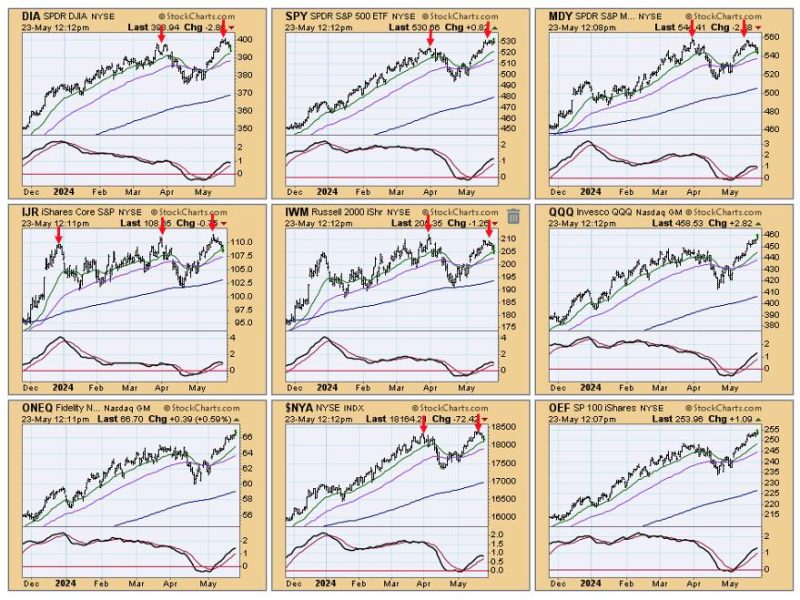In recent months, the financial markets have exhibited signs of topping out, with potential implications for investors and traders alike. As prices have continued to climb to all-time highs, it is becoming increasingly crucial to assess the sustainability of this trend and prepare for potential market shifts.
One of the key indicators suggesting a toppy market is the elevated levels of market valuations. Price-to-earnings ratios have reached historical highs, signaling that stocks may be overvalued relative to their underlying earnings. This can potentially lead to a correction as markets seek to align valuations with economic fundamentals.
Another concerning factor is the increasing level of market exuberance and speculation. Retail investors, fueled by social media and easy access to trading platforms, have taken on significant risk, often driven by hype and momentum rather than sound investment principles. This speculative behavior can create an unsustainable market environment, prone to sudden downturns and increased volatility.
Furthermore, the Federal Reserve’s monetary policy stance is a critical factor influencing market dynamics. The central bank’s dovish approach, characterized by low interest rates and asset purchases, has supported asset prices and contributed to the current bull market. However, any indications of a shift towards a more hawkish stance could prompt a reevaluation of market expectations and impact investor sentiment.
Geopolitical risks also loom large on the horizon, with tensions in global hotspots such as Ukraine, the Middle East, and East Asia potentially disrupting markets. The uncertain geopolitical landscape combined with the ongoing challenges posed by the COVID-19 pandemic create a volatile mix that could trigger market turbulence in the near future.
In response to these developments, investors are advised to exercise caution and review their portfolios to ensure they are well-positioned to weather potential market downturns. Diversification across asset classes and geographies can help mitigate risk and protect against unforeseen market shocks. Additionally, staying informed about market developments and maintaining a long-term perspective are essential for navigating uncertain market conditions.
In conclusion, while the current market environment may appear frothy and susceptible to correction, prudent investors can take steps to safeguard their portfolios and mitigate risks. By remaining vigilant, disciplined, and diversified, investors can be better prepared to navigate the challenges and opportunities presented by the evolving market landscape.


































